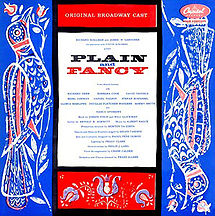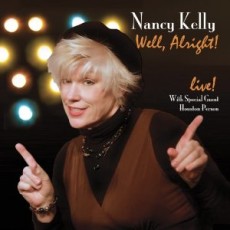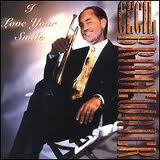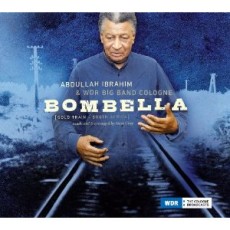
From Broadway To 52nd Street
Plain And Fancy opened at the Mark Hellinger Theatre on January 27, 1955 and ran for 461 performances. Albert Hague & Arnold B. Horwitt composed the music and the show starred Richard Derr, Shirl Conway, Will Able, Gloria Marlowe, Fletcher Rodgers and Barbara Cook. Bea Arthur was an understudy and Carol Lawrence was in the chorus. A favorite jazz tunes came from this musical was Young And Foolish.
The Story: New York City sophisticates Dan King and Ruth Winters travel to Bird-In-Hand in the Amish country of Lancaster County, PA to sell a piece of property to Jacob Yoder, who in turn intends to present it to his daughter Katie and her intended Ezra as a wedding gift. While there, they become involved with local villagers, including Hilda Miller, who mistakes Dan’s kindness for romantic overtures. Ezra’s banished brother Peter returns to claim the hand of his childhood sweetheart, Katie.
Broadway History: Previously, regardless of the size of the venue, a theatre was not considered Off-Broadway if it was within the “Broadway Box” (extending from 40th to 54th Street, and from west of Sixth Avenue to east of 8th Avenue, and including Times Square and 42nd Street. The contractual definition changed this to encompass theatres meeting the standard, which is beneficial to these theatres because of the lower minimum required salary for Actors’ Equity performers at Off-Broadway theatres as compared with the salary requirements of the union for Broadway theatres. Examples of Off-Broadway theatres within the Broadway Box are the Laura Pels Theatre and the Snapple Theater Center..
A number of Off-Broadway musicals have had subsequent runs on Broadway. These have included musicals such as Hair, Godspell, A Chorus Line, Little Shop of Horrors, Rent and The 25th Annual Putnam County Spelling Bee to name a few. Other productions such as Stomp, Blue Man Group and Altar Boyz have run for several years Off Broadway. The Fantasticks, the longest running musical in theatre history, spent its original 42-year run Off Broadway.
Sponsored By
www.whatissuitetabu.com

Daily Dose Of Jazz…
Nancy Kelly was born on October 12, 1950 in Rochester, New York and at the age of four began studying piano, clarinet, drama and dance with private instructors, and voice at the Eastman School of Music. By sixteen she formed a combo and performed in clubs around Rochester.
The early Seventies saw her joining a rock band as lead singer and touring the East coast and Midwest. She enjoyed the freedom of improvising and soon gravitated to jazz, once again forming her own group. Gaining a reputation she began performing on the West coast, the Far East and Europe and regularly performs in New York City at the Blue Note, Birdland and Dizzy’s Club Coca-Cola at Lincoln Center.
Nancy has appeared on the stages of numerous jazz festivals, sung with symphony orchestras, and has been named “Best Female Jazz Vocalist” twice in the Down Beat Readers’ Poll. He debut cd “Live Jazz” reached #11 on the Billboard charts, followed by three ore with “Born To Swing” and “Well Alright” featuring tenor saxophonist Houston Person.
A four-year stint at Jewels Jazz club in Philadelphia between 1982 – 86 helped to revitalize jazz in Philadelphia, Pennsylvania. Subsequently jazz musicians Al Cohn, Jack McDuff, Etta Jones, Shirley Scott and Joey DeFrancesco became favorites of audiences bringing together students and professional people.
Nancy Kelly continues to perform and swing with her signature smoky, take-no-prisoner, back to the roots style delivering authentic expression of real emotion.
More Posts: vocal

Daily Dose Of Jazz…
Curtis Amy was born on October 11, 1929 in Houston, Texas and learned how to play clarinet before joining the Army. During his time in service he picked up the tenor saxophone and after his discharge he enrolled and graduated from Kentucky State College.
Working as an educator in Tennessee while playing in mid-western jazz clubs for a time and in the mid-1950s, Amy relocated to Los Angeles and signed with Pacific Jazz Records. By the mid-60s he spent three years as musical director for Ray Charles’ orchestra, together with his wife and singer Merry Clayton, and Steve Huffsteter.
Curtis lead his own bands and recording albums under his own name, Amy also did session work and played the solos on several recordings, including The Doors song “Touch Me”, Carole King’s “Tapestry”, and Lou Rawls’ first albums, “Black and Blue and Tobacco Road”; with Dexter Gordon in the Onzy Matthews’ big band as well as working with Marvin Gaye, Tammy Terrell and Smoky Robinson.
Soul jazz and hard bop tenor saxophonist Curtis Amy, a part of the West coast jazz scene who explored other musical mediums, passed away on June 5, 2002.
More Posts: saxophone

Daily Dose Of Jazz…
Cecil Bridgewater was born on Oct. 10, 1942 in Urbana, Illinois and studied music at the University of Illinois. Along with his brother Ron, they formed the Bridgewater Brothers Band in 1969. In 1970 he played with Horace Silver following this stint with a Thad Jones/Mel Lewis association from 1970 to 1976. During this period of the Seventies he married Dee Dee Bridgewater and played with Max Roach starting a decades-long association.
Cecil recorded his debut album “I Love Your Smile” in 1992, has enjoyed playing the sideman on some two dozen recordings with Dizzy Gillespie, Art Blakey, Randy Weston, Charles McPherson, Joe Henderson, Roy Brooks, Abdullah Ibrahim and Sam Rivers; and has composed works premiered by the Cleveland Chamber Orchestra and Meet the Composer.
Bridgewater has become a great supporter of The Jazz Foundation of America in their mission to save the homes and the lives of America’s elderly jazz and blues musicians including musicians that survived Hurricane Katrina. Cecil performed at the 2008 Benefit Concert, “A Great Night in Harlem” at the World Famous Apollo Theater. He continues to perform while currently teaching as adjunct faculty at Manhattan School of Music, New School, William Patterson and The Julliard School.
More Posts: trumpet

Daily Dose Of Jazz…
Abdullah Ibrahim was born October 9, 1934 in Cape Town, South Africa, formerly known as Adolph Johannes Brand, and as Dollar Brand. He first received piano lessons at age seven, was an avid consumer of jazz records brought by American sailors, and was playing jazz professionally by 1949. In 1959 and 1960, he played alongside Kippie Moeketsi and Hugh Masekela with The Jazz Epistles in Sophiatown, later recording the first jazz LP by Black South African musicians in 1960. Ibrahim then joined the European tour of the musical King Kong.
Moving to Europe in 1962, it was in the following year that Duke Ellington heard the Dollar Brand Trio at Zurich’s Africana Club at the request of Brand’s wife-to-be Sathima Bea Benjamin. As a result, Duke Ellington presents The Dollar Brand Trio was recorded at Reprise followed by a second session of the trio with Duke Ellington and Billy Strayhorn also on piano performing with Sathima as the vocalist. The recording, A Morning In Paris, remained unreleased until 1996 and then under Benjamin’s name. This led to wider appearances of the Dollar Brand Trio at many European festivals, as well as on radio and television.
Ibrahim has toured mainly in Europe, the United States, and South Africa, the band performing mainly in concert and club settings, and sometimes playing solo piano. Mainly playing the piano, he also plays the flute, saxophone, and cello, performing mostly his own compositions, although he sometimes performs pieces composed by others.
Abdullah Ibrahim to date has recorded more than forty albums as a leader, has written the soundtracks for a number of films, Chocolat and No Fear, No Die; and was a part of the 2002 documentary Amandla! – A Revolution in Four Part Harmony where he and others recalled the days of apartheid. He has ventured into orchestral performances with the inauguration of Nelson Mandela and the later initiation of the 18-piece Cape Town Jazz Orchestra in 2006.
A pianist and composer, Abdullah Ibrahim’s music reflects many of the musical influences of his childhood in the multicultural port areas of Cape Town, ranging from traditional African songs to the gospel of the AME church and ragas, to more modern jazz and other Western styles reflecting the influences of Thelonious Monk and Duke Ellington. He continues to perform, record and tour.


